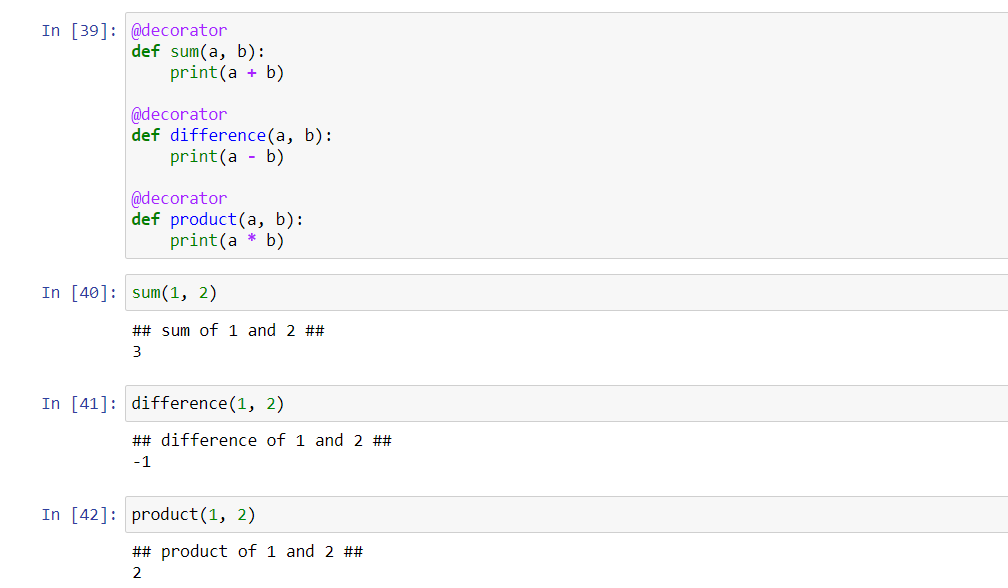Decorators: Enhancing Python Functions Simply and Powerfully

When discussing Python programming, one feature that frequently captures the attention of developers, from beginners to experts, is the use of decorators. These powerful tools offer a unique way to modify or enhance functions without altering their original code. In this comprehensive guide, we'll explore what decorators are, how they work, and why they are indispensable in modern Python programming.
What Are Decorators?

At its core, a decorator in Python is a function that takes another function as an argument and extends its behavior without explicitly modifying it. Decorators are essentially syntactic sugar for higher-order functions. Here’s why they are important:
- They simplify code by allowing you to wrap additional functionality around an existing function.
- They promote clean, modular code by separating cross-cutting concerns.
- They encourage the Don’t Repeat Yourself (DRY) principle.
Why Use Decorators?

The primary reasons for using decorators include:
- Logging: Adding logging to functions for debugging or monitoring.
- Authentication: Checking user permissions before executing the wrapped function.
- Timing: Measuring how long a function takes to execute.
- Memoization: Caching function results to avoid redundant calculations.
- Modifying Arguments or Return Values: Manipulating inputs or outputs of functions.
A Simple Example

To illustrate, let’s look at a simple decorator that logs the entry and exit of a function:
def log_execution(func): def wrapper(*args, kwargs): print(f”Entering {func.name}()“) result = func(*args, kwargs) print(f”Exiting {func.name}()“) return result return wrapper
@log_execution def greet(name): print(f”Hello, {name}!“)
Here, greet is a function that prints a greeting. When decorated with @log_execution, it will print additional logging messages before and after the function execution. This is a simple yet powerful demonstration of how decorators work.
📝 Note: Decorators wrap the original function and can modify its behavior or extend its functionality, but they do not change the function itself.
Understanding the Mechanics

Decorators in Python can be broken down into the following steps:
- Defining the Decorator Function: This is where you define the logic that will wrap around the original function.
- Returning the Wrapper Function: Inside the decorator, you define and return a wrapper function that includes the augmented functionality.
- Applying the Decorator: Using the ‘@’ symbol before the function definition.
- Execution Flow: Understanding how Python calls and executes the decorated function.
Decorators with Arguments

Sometimes, you might want to pass arguments to decorators. Here’s how you can achieve this:
def repeat(times): def decorator(func): def wrapper(*args, kwargs): for _ in range(times): result = func(*args, kwargs) return result return wrapper return decorator
@repeat(3) def print_hello(): print(“Hello, Decorators!”)
In this example, @repeat(3) calls the original repeat function, which then decorates print_hello to print "Hello, Decorators!" three times.
🔄 Note: Decorators with arguments introduce an additional function layer, increasing complexity but also flexibility.
Advanced Decorator Patterns

Beyond simple decorators, there are several advanced patterns:
- Chaining Decorators: Applying multiple decorators to a single function.
- Preserving Function Metadata: Using
@functools.wrapsto maintain function attributes like docstrings and names. - Class-based Decorators: Using classes to create decorators.
- Parametrized Decorators: As seen above, where the decorator itself can accept parameters.
Chaining Decorators

You can chain decorators to apply multiple transformations to a function:
@log_execution
@repeat(3)
def say_how():
print(“How are you?”)
This would log the execution of say_how and also repeat its call three times.
Class-based Decorators

Classes can also be used as decorators:
class count_calls: def init(self, func): self.func = func self.call_count = 0def __call__(self, *args, kwargs): self.call_count += 1 print(f"Function {self.func.__name__} was called {self.call_count} times") return self.func(*args, kwargs)
@count_calls def add(a, b): return a + b
This class keeps track of how many times the decorated function is called, demonstrating how classes can provide stateful decorators.
🧮 Note: Class-based decorators can maintain state, making them useful for tracking function calls or other metrics.
Use Cases and Practical Examples

Decorators shine in various practical scenarios:
- Authentication and Authorization: Checking permissions before allowing access to functions.
- Caching: Implementing memoization to improve performance.
- Logging: Logging function calls, arguments, and results.
- Validation: Ensuring function arguments meet certain criteria before execution.
Authentication Example

def requires_auth(func): def wrapper(user): if user.is_authenticated: return func(user) else: print(“Permission denied”) return None return wrapper
@requires_auth def edit_profile(user): # Code to edit profile pass
This decorator checks if the user is authenticated before allowing the edit profile functionality.
Wrapping Up: The Power of Decorators

Decorators in Python aren’t just about syntactic sugar or code elegance; they represent a profound capability to extend function behavior in a modular, reusable manner. Whether you’re looking to add timing functions, enforce authentication, or implement complex patterns like memoization, decorators provide a clean, Pythonic solution. By understanding and leveraging decorators, developers can craft more maintainable, readable, and efficient code. They encourage a separation of concerns, promote reusability, and help keep the codebase DRY. As you delve deeper into Python, mastering decorators will prove to be a key skill, enhancing not just your functions but your overall approach to programming.
What’s the difference between decorators and functions in Python?

+
While decorators are functions themselves, they are distinct because they modify or extend the behavior of another function. They are essentially syntactic sugar for wrapping one function around another to alter its behavior at runtime.
Can I stack multiple decorators on a single function?

+
Yes, decorators can be stacked. When multiple decorators are applied to a function, the closest decorator to the function runs first, and then it propagates up the chain.
How do decorators impact function metadata?

+
Decorators can overwrite the metadata (like __name__ or __doc__) of the original function. Use functools.wraps to preserve these attributes when defining your decorators.
Why would I use class-based decorators instead of function-based ones?

+
Class-based decorators can maintain state across multiple calls to the decorated function, which isn’t straightforward with function-based decorators unless you resort to closures or nonlocal scope.